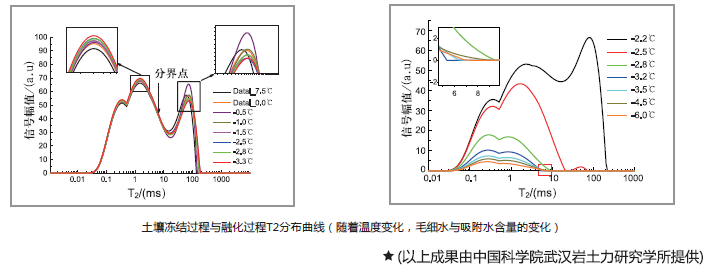Application background
It is generally believed that the soil consists of three phases of solid phase (soil particles), liquid phase (soil water) and gas phase (gas contained in soil). When the soil particle space is completely filled by the liquid phase, that is, the ratio of water to soil void is 100%. The soil is called saturated soil. Conversely, the soil pores are filled with water and air, that is, when the saturation is less than 100 but greater than 0, the soil is unsaturated soil. The water in the pores of the soil can be divided into three types of adsorbed water, capillary water and gravity water according to the state, nature and flow mode of the soil; for the clay soil with obvious physical and chemical interaction between soil and water, the adsorbed water is in the soil. The content in the body is the highest in the three types of pore water. When the saturation is below 70, the adsorption will be the main form of soil water. In view of the mechanical properties and physical and chemical properties of the adsorbed water in the range of large saturation. The important influence, then the research work on the content and variation of adsorbed water in the soil has very important theoretical and practical significance; proton NMR is a study of the content and distribution of protons (ie hydrogen nuclei) per unit volume Fast, non-destructive detection technology. Due to the strong nuclear magnetic signal of 1H in water, water is widely found in nature. The application of NMR technology in geotechnical engineering mainly focuses on the measurement of rock diameter distribution and adsorption water content. The specific method is to convert the rock pore size distribution by combined T2 curve and mercury intrusion curve and determine the cutoff value of adsorbed water T2 by centrifugal method to determine the adsorption. Water content. When the liquid in the pore is water and the magnetic field gradient is approximately zero, the transverse relaxation time and longitudinal relaxation time of the porous medium system are only related to the pore structure of the porous medium, which is mainly affected by the surface relaxation mechanism of the system. And the approximation is independent of the other two types of relaxation mechanisms.
The function of nuclear magnetic resonance in the field of petroleum core:
1) Determination of porosity, water content and water saturation
2) Freeze-thaw temperature-seepage-stress damage constitutive model
3) Research on freezing and thawing mechanism
4) Determination of undisturbed water content of frozen soil
5) Formation and process decomposition of natural gas hydrate
6) Determination of capillary water and adsorbed water content
Application example 1: Soil pore size distribution

Soil T2 distribution map and soil pore size distribution histogram
Application example 2: Test analysis of soil adsorption water content

They're packed with high-pigment formulas for every preference – cream, matte, lip gloss or lipstick, ...you name it, we've got it.Whether you like to wear shades individually or prefer getting experimental with flawless ombre looks, we have you and your style covered. Our collection of palettes caters to both at-home applications or on-the-go touch-ups, meaning you can revel in a long-lasting look that takes you through the day and into the night. You'll even find pro-grade lip brushes included for precise, fuss-free application. There's no doubt that these palettes and kits will give you the perfect pout when you need it most.
Satin Lipstick Palette, Mixing Palette, Oil infused Palette
Zhongshan Meido Cosmetics Industry Co., Ltd , https://www.meidocosmetics.com